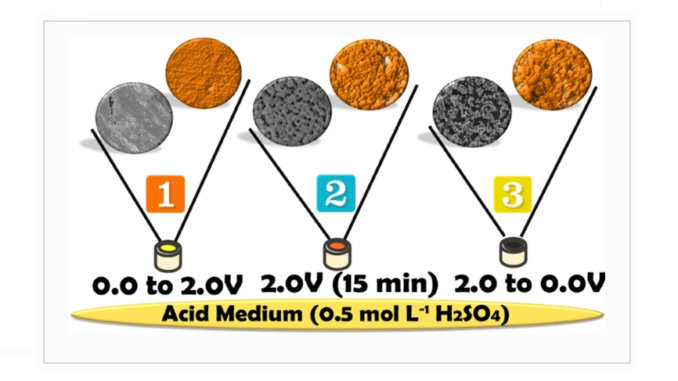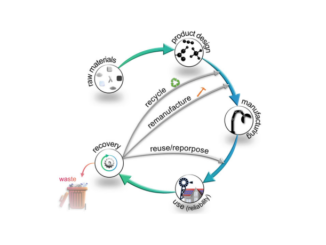
Direct anodization–reduction nanomodification of gold films: investigating electrocatalysis of the emerging contaminant halobenzoquinone
Abstract: Controlling the sensitivity, quantification, and detection limits of electrochemical sensors is an ongoing challenge. The properties of thin modified gold-film electrodes under varying potentials have been studied to improve such analytical validation parameters; however, most international literature on the subject tends to analyze the role of synthesis lonely without deep evaluating surface properties throughout every step of a modification process. Herein, we aimed to link materials science with sensing analytical application, revisiting a nanoporous gold-film electrochemical synthesis, and explain its performance using SEM, AFM, and XPS analyses. Also, we used the neglected emerging contaminant 2,6-dichloro-1,4-benzoquinone (DCBQ) for our analytical issues assessment. We were able to show the electrocatalytic effect of the prepared electrode, commonly mistreated in such field; also, we evaluated the sensor’s modification for a possible explanation for the system’s reproducibility (10 times without loss of activity, RSD inferior to 5%). Although the modification time presented an effect on the nanoporous electrode response, we could confirm that it was not an area augmentation effect only based on the electrochemical characterizations. We believe we took a step forward to understand the effect of the electrochemical modification performed, which can be carried out in other systems, helping a more rational design of sensors.
Author(s): Junior, J. A. D.; Siqueira, G. P.; Ribeiro, L. K.; Coelho, D.; Longo, E.; Batista, A. M.; Kraatz, H. B.; Tanaka, A. A.; Dantas, L. M. F.; Garcia, M. A. S.; da Silva, I. S.
Journal of Materials Science
Published: 03 January 2022
DOI: https://doi.org/10.1007/s10853-021-06616-4
CDMF
The CDMF, hosted at the Federal University of São Carlos (UFSCar), is one of the Research, Innovation and Dissemination Centers (RIDC) supported by the São Paulo State Research Support Foundation (Fapesp), and also receives investment from the National Council Scientific and Technological Development (CNPq), from the National Institute of Science and Technology of Materials in Nanotechnology (INCTMN).




